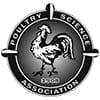Explore all the information on
Poultry genetics and reproduction
Poultry breeding has been one of the most impactful advances in the last 100 years. The role that improved global production of eggs and poultry meat have in reducing global hunger and food insecurity is difficult to overstate. The vast majority of these improvements have come from genetic selection for improved feed efficiency, along with streamlining of the overall production system, and better understanding of poultry nutrition. While the industrial approach to poultry production has created a highly consistent and dependable food source the world over, several problems threaten the long term sustainability of this model - including musculoskeletal and metabolic disorders, welfare concerns, and the need to adapt to a changing climate. Researchers in poultry breeding and genetics utilize quantitative, population, and molecular genetic techniques to help understand the effects of selection for economically important traits and enhance genetic performance through changes in environment and management strategies.
1. Introduction Newcastle disease (ND) is a highly contagious avian disease with a significant impact on global poultry production. ND is caused by the Newcastle disease virus (NDV), formerly known as Avian orthoavulavirus 1 (AOAV-1), belonging to the family Paramyxoviridae (https://talk.ictvonline.org/taxonomy/ accessed on 20 October 2021). The genome of NDV is single-stranded, non-segmented, negative-sense RNA encoding six structural proteins: nucleocapsid protein (NP),...
Comments : 0
Recommendations: 0
Infectious laryngotracheitis is an avian respiratory disease which is caused by infectious laryngotracheitis virus (ILTV), and clinical signs vary from coughing, conjunctivitis, and gasping to expectoration of bloody mucus and death (1). Whereas genomic database analysis allowed the identification of an ILTV field strain in Australia as a causative agent of outbreaks as a result of recombination between attenuated vaccine viruses (2), genomic sequence data from viral outbreaks in South...
Comments : 1
Recommendations: 1
It has been undoubtedly proved that these poultry pure line selection based on physical, statistical and genetics have done tremendous amount of improvement in economic and welfare traits in poultry industry since last 3 decades. In India, few breeding organization's have been already established using these techniques and are contributing almost 75% of the total indian broiler production. This has already stopped imports of Grandparents DOC in India since last 5 years. The improvement is...
Comments : 0
Recommendations: 0
Selection of elite genetics is very important and most crucial task as single pureline male produces million tonnes of poultry meat down the line. ...
Comments : 1
Recommendations: 0


Lost in the Market Uncertainty Caused by the Outbreak
Suggested link
Ikele Chinyere (University of Nigeria, Nsukka) talks to Sam Shafer (PSA) about how producers can benefit from activating this gene. Let's Squawk About It is a monthly interview segment by the Poultry Science Association....
Comments : 0
Recommendations: 0
Environmental factors encountered during pre-natal life influence the developmental trajectory of a developing embryo, altering post-natal phenotypes (Du et al., 2015). Maternal nutrition and stress directly influence the maternal environment, with both factors prominent in the broiler breeder industry. Broiler breeders are feed restricted to improve reproductive output; however evidence suggests hens suffer from chronic stress due to prolonged hunger (Mench, 2002). Feed restriction in...
Comments : 0
Recommendations: 0
by Sam Shafer
Thanks to breakthroughs in poultry science, improvements in the genetic potential of broiler chickens have cut the average production cycle in half. Now producers are looking for ways to improve egg hatchability and the uniformity and quality of broiler chicks.
Hatcheries use two major methods for incubating eggs: multi-stage systems and single-stage systems. Multi-stage incubators combine eggs from different farms and incubate embryos at...
Comments : 0
Recommendations: 1
by Sam Shafer
Ethiopian scientists evaluate three promising chicken breeds in rural and small-scale systems
Improving food security around the world means boosting protein production in ways that work best for local farmers. In Ethiopia, the government and outside agencies have promoted exotic, higher-yielding chicken breeds. Unfortunately, most exotic breeds introduced in the country require a level of investment in feed, veterinary...
Comments : 0
Recommendations: 0
Introduction In late years, genetic studies on broiler chickens for selection of traits such as high growth rate and larger size of the body shows there is a negative correlation between reproductive traits and increasing yield. So that's in the roosters, physiological disorders like decreased libido, decreased mating numbers and reduced sperm production have increased (Dawkins and Layton, 2012). In addition to the strong negative genetic correlation between productive and...
Comments : 3
Recommendations: 5
1. Introduction Redox biology is a very quickly developing area of modern biological sciences, and roles of redox homeostasis in health and disease have recently received tremendous attention [1–6]. There are a range of redox pairs in cells/tissues responsible for redox homeostasis maintenance/regulation. They include, but are not limited to, NAD+/NADH, NADP+/NADPH, GSSH/GSH (glutathione system), Trxox/Trxred (thioredoxin system), protein thiolsox/protein thiolsred. It is...
Comments : 0
Recommendations: 1
Introduction Crossbreeding is a method of genetic improvement [1]. It produces chickens that will be better in different economic traits, such as growth rate, feed efficiency, age at first egg, and carcass characteristics [1,2]. The superiority of crossbreeds over purebreeds in some of the above-mentioned productive and reproductive traits was confirmed by many scholars [3]. Many scholars evaluated the assessment of reciprocal crossbreeds for different breeds in different...
Comments : 0
Recommendations: 0
1. Introduction The Ethiopian indigenous chickens are characterized by slow growth, late maturity and low egg production performance which are estimated at 60 small eggs with thick shells and a deep yellow yolk color (Yami and Dessie, 1997; Niraj et al., 2014). Local chickens kept under the intensive management systems are inferior to exotic stock in health status and they are also slow in rate of feathering and exhibit recurrent outbreaks of disease (Solomon, 2004). Because of...
Comments : 0
Recommendations: 1
Avibacterium paragallinarum is the etiologic agent of infectious coryza, an acute respiratory disease of chickens, which is globally distributed and causes serious economic losses in the poultry production industry. It is a Gram-negative, nonmotile, capsulated, facultative anaerobe belonging to the family Pasteurellaceae and is classified in 9 serovars distributed in 3 serogroups (A, B, and C) (1, 2). The study of its genome and virulence factors (hemagglutinin antigen, capsule,...
Comments : 0
Recommendations: 0
Bacterium Avibacterium paragallinarum is the causative agent of infectious coryza. This is an acute respiratory disease of economic significance in poultry and leads to a decrease in egg production and failure or retardation of egg laying [1]. Serological classification of A. paragallinarum is based on the presence of specific hemagglutinins (HAs). A. paragallinarum strains/isolates are traditionally serotyped by means of 2 schemes: the Page scheme, which...
Comments : 0
Recommendations: 0
For the last three decades poultry production worldwide has made tremendous progress in terms of quantity and quality of meat and egg production, including improvement of growth rate and feed conversion rate. However, it has been proven that commercial poultry production is associated with a range of stresses including environmental, technological, nutritional, and internal/biological [1,2]. Indeed, it is practically impossible to avoid stresses, so therefore overproduction of free radicals...
Comments : 0
Recommendations: 2
PlusVet Animal Health present the negative effects heat stress layers and breeders on the fertility of layers and breeders....
Comments : 0
Recommendations: 2
"Zinc can play a role in improving not only the reproduction of the breeder but also the livability of the chicken from that egg". Dr. Mercedes Vazquez-Anon, senior director of animal nutrition, Novus International, spoke to Engormix about maternal feeding/epigenetics during IPPE 2020, in Atlanta, USA....
Comments : 2
Recommendations: 5
INTRODUCTION Genetic selection programs emphasizing broiler growth, breast muscle deposition, and feed efficiency traits over the past 30 yr have led to a rate of change that has not slowed (Havenstein et al., 2003a,b). Photostimulation ( PS ) age, feed allocation, and BW profile of the maturing pullet can all effect nutrient partitioning between growth and ovary development (Robinson et al., 2007). Renema et al. (2007b) reported that, as a percentage of BW, Ross 708...
Comments : 0
Recommendations: 0
INTRODUCTION Cool temperature storage of eggs prior to incubation is a frequent practice of commercial broiler hatcheries. However, continued storage beyond 7 d leads to an increase in early embryonic mortality. The cellular and molecular mechanisms responsible for early embryonic mortality associated with egg storage and means to reduce such mortality has been addressed by several investigators (Fasenko, 2007; Hamidu et al., 2011; Dymond et al., 2013)....
Comments : 0
Recommendations: 0
1. Introduction Salmonella enterica is one of the leading causes of foodborne illness in the United States and around the world [1,2]. While there are over 2500 serotypes of Salmonella, 20 serotypes, including serotype Infantis, account for most U.S. human infections [3]. Infantis was the sixth most common serotype associated with human infections in 2016 and the fifth most common serotype isolated from chicken products in the U.S. in 2014 [3,4]. Infantis has consistently been...
Comments : 0
Recommendations: 0


.jpg&w=3840&q=75)











.jpg&w=3840&q=75)


.jpg&w=3840&q=75)


.jpg&w=3840&q=75)













